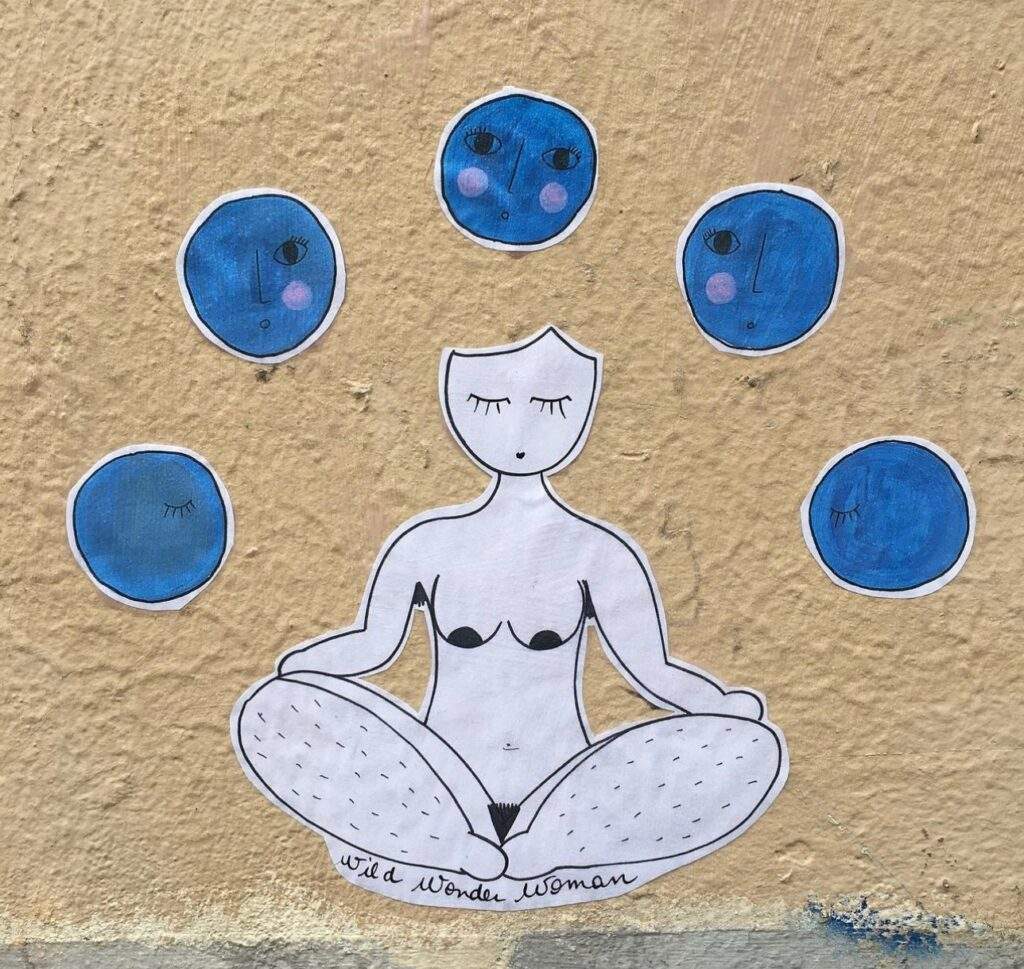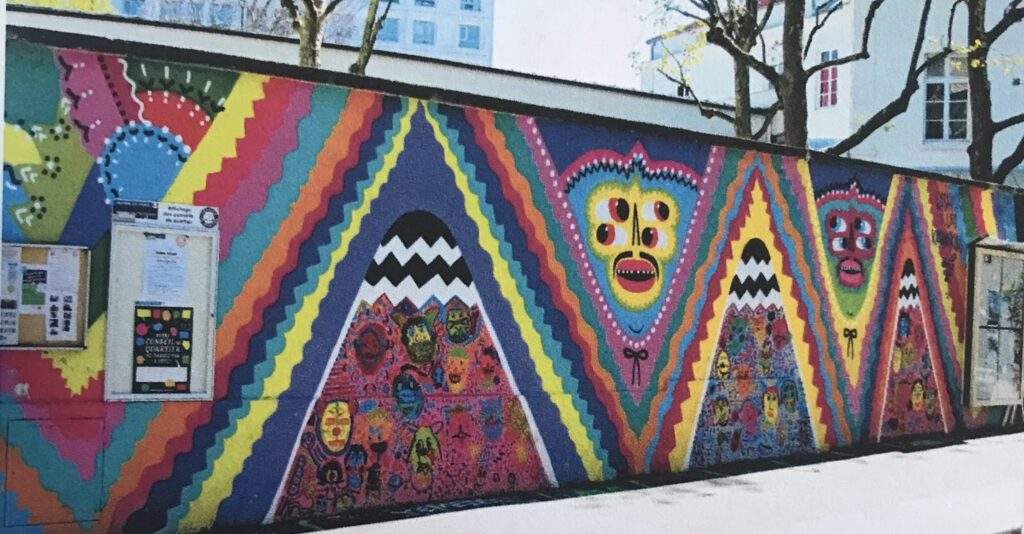A few days ago we celebrated the International Women’s Day for Equal Rights. A good opportunity to address the situation of female artists in urban art.
1. The question of gender in art
New York 1985 : a group of female artists founded the Guerrilla Girls collective to denounce racial and gender discrimination in the art world by putting illegal posters in the streets.

Guerilla Girls, Do women have to be naked to get into the Met. Museum ?, Screenprint on paper , 28 x 71
This now famous 1989 poster points to the ambivalence of gender representation in the art world. Taking up La Grande Odalisque (1814) by painter Jean-Auguste-Dominique Ingres, wearing the mask the collective wear during their actions, the Guerrilla Girls ask the following question: “Do women have to be naked to get into the Met. Museum?” The answer shows a sad record since “Less than 5% of the artists in the Modern Art sections are women, but 85% of the nudes are female”.
By using the street as a place to exhibit their work, women artists seize the opportunity that urban art represents : reach the public without going through mediation organizations. It is a strategy that avoids the obstacles related to the inequality of representation between men and women in galleries.
The stencil artist Miss.Tic, a feminist pioneer of French urban art who has been spreading her poetic works in the streets of Paris since 1985, is today an icon of the movement. The works of Miss.Tic that we come across during our urban wanderings are today the vestiges of a prolific practice. A heritage we must preserve since the artist died in May 2022.

Miss.Tic, De mes Frasques je fais des Fresques, Rue Véron Paris XVIIIe
2. Is urban art a gendered environment ?
As an organized and codified movement, urban art offers a certain equality in the face of gender representation since it is common to use a pseudonym, otherwise known as a blaze. When degendered, the blaze masks the gender of the individual behind the street artist. However, some artists assume the gender they identify with like the “ladies” such as the graffiti artist Lady.k, the stencil artist Lady Bug or Demoiselle MM.

Lady.k, 2021, IG : @lady.k_156 © @hermundherd

Lady Bug, Rue Alphand Paris XIIIe, september 2022 © IG : @ladybugnantes
In 2012 the term «Mademoiselle» was removed from the official forms. Until then it has been used to refer to a young single woman. Once married, she will be called «Madam». Therefore, women’ status depends on the man responsible for them, either the father or the husband. The artist Demoiselle MM reclaims this controversial title to redefine the narrative of which each of the «Demoiselle» tells her own story.

Demoiselle MM, Spot 13, Paris XIIIe, IG : @demoisellemm © Marie le Palec, october 2022
3. The issue of women’s bodies in the streets
If female nudity is over-represented in the closed spaces of museums and galleries, its presence is displaced in the public space. This is why many urban women artists today create works that aim to reclaim their bodies.
Intra Larue is a French artist who features solitary breasts set with geometric or vegetal patterns in the streets. If we know the breasts to work in pairs, those of Intra Larue are unique and isolated. The passer-by must therefore approach the work to fully grasp what he or she is looking at, which instantly provokes an intimate relationship with the object. Even more so if the viewer learns that these plaster bas-reliefs were molded on the artist’s chest…


Intra Larue, Lisbon/Paris © IG : #intralarue @sanouki ; @le_bonbon
MarL Clito‘s collages take up the masterpieces of art history through the prism of the organ dedicated to female pleasure: the clitoris. Perhaps this is the proposal for a re-reading of art history in relation to gender issues. The artist invites us to take a feminist look at works produced for the male gaze.

MarL Clito, 8 mars 2020, Paris © IG : @marsl_streetart
Wild Wonder Woman creates small collages representing naked women who advocate the diversity of bodies, whether they are thin, opulent, hairy, smooth, etc.


Wild Wonder Woman, Paris © IG : @wild_wonder_woman
For those who advocate for a more fluid conception of gender, artist Kashink produces brightly coloured murals that depict an inclusive variation of what one might understand by «masculine» and «feminine» by questioning the codes associated with gender.

Kashink, collaborative mural, Rue Vandrezanne Paris XIIIe, © Stéphanie LOMBARD, Simon HOAREAU, Guide du street art à Paris, Alternatives (coll. Arts urbains), 2018, p.33
Editor :
Marie le Palec
Liste des artistes :
- Guerrilla Girls
- Miss.Tic
- Intra Larue
- MarsL Clito
- Wild Wonder Woman
- Kashink
- Lady K
- Lady Bug
- Demoiselle MM
Bibliography :
– BRUNEL-LAFARGUE Karen, L’art se rue, H’Artpon, 2016.
– LOMBARD Stéphanie, HOAREAU Simon, Guide du street art à Paris, Alternatives (coll. Arts urbains), 2018.
– MULLINS Charlotte, A Little Feminist History of Art, Tate Publishing, London, 2019.
– TAPIES Xavier, Le street art au féminin, Paris, Graffito Books, 2017.

